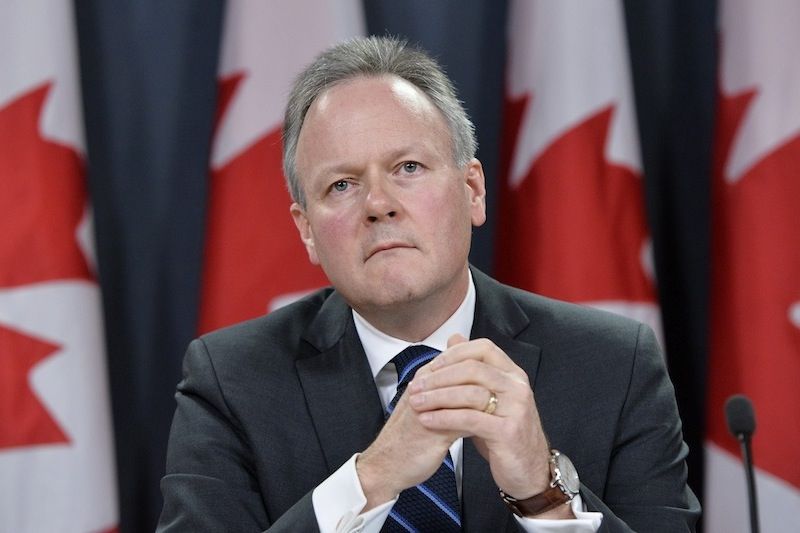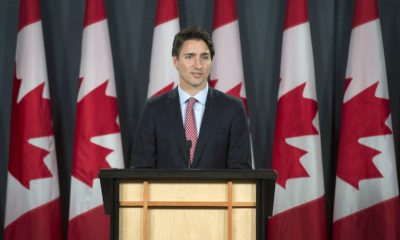- Poloz and the Urgency of a July Rate Hike
There is nothing in the Bank of Canada’s market-moving statements last week to indicate an interest rate hike is imminent, but investors aren’t taking chances.
The central bank’s next decision on July 12 is now a toss up, with traders assigning a 50 percent chance of an increase. Before Governor Stephen Poloz and his top deputy Carolyn Wilkins talked openly about the prospect of raising rates, odds were close to zero for a July hike and investors hadn’t priced in a full 25 basis point increase until the end of 2018.
Why the sudden urgency?
Part of the explanation may be that after being caught short by Poloz in the past, investors have become “twice shy” with the bank. The last time Poloz changed direction on rates — in January 2015 — he went from a change in tone (a deputy’s speech) to an interest rate cut in a matter of eight days. The cut was unanticipated and investors complained about message confusion.
Compared to that move, Poloz can reasonably argue he’s left investors plenty of time to ponder a rate increase.
“We got a rate cut surprise in January 2015 with very little softening up of the ground,” said Michael Gregory, an economist at Bank of Montreal. “Therefore the Bank of Canada is saying, ‘We may or may not go in July, probably won’t, but if we do be warned.”
Accommodating Banker
In fact, by choosing to soften the ground last week during a deputy’s speech, Poloz is only fueling speculation he’s itching to move. If he wanted to raise rates later this year, then he could have set the stage at next month’s decision, which coincides with new quarterly forecasts and a press conference.
This is a central banker, after all, who has a reputation for being accommodative, and who only a few months ago was talking about rate cuts. By the time his seven-year term is done, Poloz will probably have kept borrowing costs on average at lower levels than any of his eight predecessors — a legacy shared by many of his contemporaries in other countries.
“You can argue Steve has been more accommodating, so must feel really confident in the economy’s prospects if he’s itching to go,” said Andrew Spence, head of liquid alternatives at Scotia Institutional Asset Management and a former adviser at the Bank of Canada.
In other words, the fact Poloz has moved so quickly into what is for him uncharted territory may be a signal he’s determined to move. Talk of higher rates may suggest an underlying change has taken place.
Tightening Bias I
Of course, just because there’s a particular bias, it doesn’t mean rates will move in that direction. A lot depends on what inflation does. Take 2013 as an example.
When he took over at the Bank of Canada in June of that year, Poloz inherited a tightening bias from his predecessor, Mark Carney. But it didn’t last long as inflation continued to remain sluggish.
At his first rate decision six weeks later, Poloz kept the bias but toned it down. In October, amid a deteriorating global growth outlook, Poloz dropped the bias altogether.
That year, quarterly GDP growth was robust, averaging 3.6 percent, but inflation was hovering around 1 percent. Inflation concerns won the day. (Not surprising given the Bank of Canada’s mandate.)
Today, it’s a similar story. In the last three quarters, growth has averaged 3.5 percent, while inflation is running at just 1.5 percent.
Inflation Matters?
That’s why last week’s changes were such a surprise, given how much inflation does matter. Could the new language mean the central bank’s modeling — at the current pace of growth — is beginning to forecast inflation well beyond the Bank of Canada’s 2 percent target.
As recently as May, the bank said low inflation was a sign of the economy’s excess slack. In her June 12 speech, Wilkins said it measured the “lagged effects” of excess capacity.
That’s a big change in three weeks, and makes consumer price inflation data due Friday — the last set before the July 12 decision — particularly important.


 Billionaire Watch3 weeks ago
Billionaire Watch3 weeks ago
 Startups4 weeks ago
Startups4 weeks ago
 News4 weeks ago
News4 weeks ago
 News4 weeks ago
News4 weeks ago
 Bitcoin4 weeks ago
Bitcoin4 weeks ago
 Naira4 weeks ago
Naira4 weeks ago
 Forex3 weeks ago
Forex3 weeks ago
 Treasury Bills4 weeks ago
Treasury Bills4 weeks ago






















